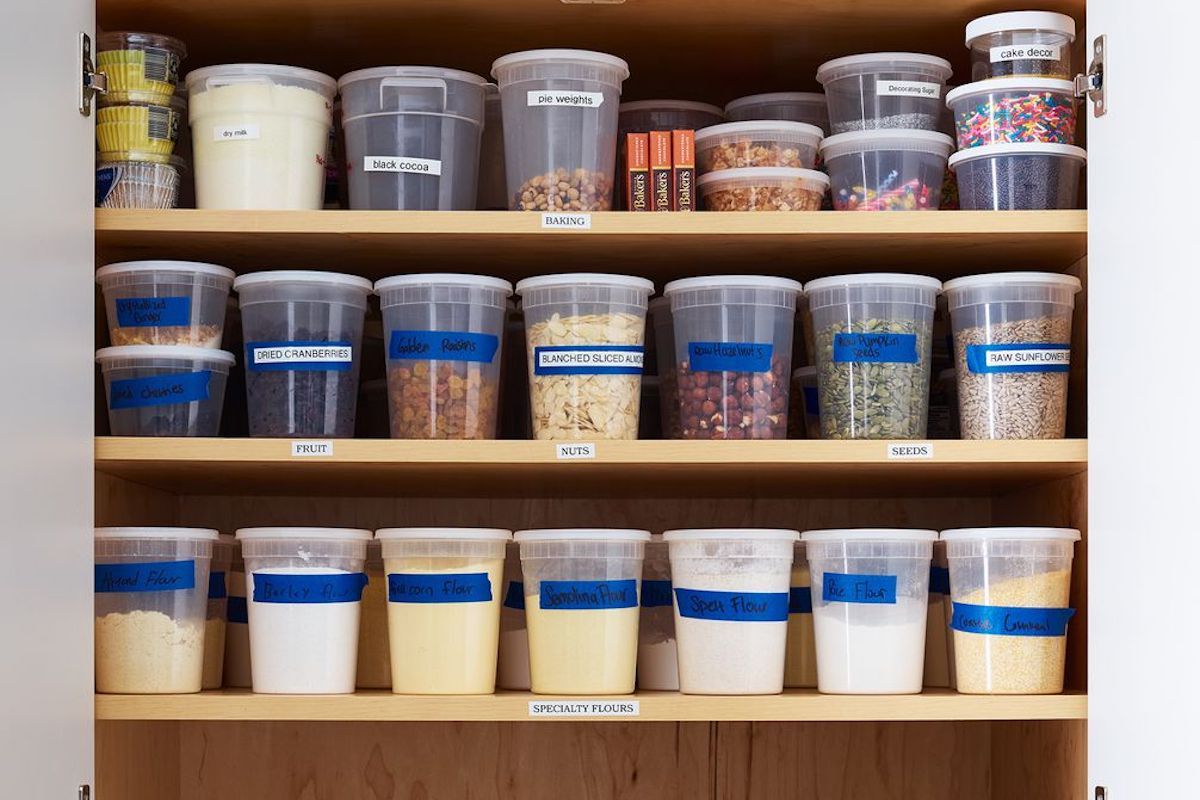Welcome to Your No-Sweat Guide to Spring Cleaning, a month-long series that puts the fun (yep, for real!) back into cleaning. We're talking spruce-ups that take less than five minutes, why-didn't-I-think-of-that hacks, and hands-off cleaning tasks that basically . . . do themselves — plus our trustiest tools and helpers. The goal: clean less, go outside more.
* * *
Kitchen cabinets are actually some of the messiest spots in the home: where spills, stains, and drips go to turn into unrecognizable gunk. This can be particularly upsetting if, like me, you have recently updated cabinets that you want to try to keep shiny and new for as long as humanly possible. (All this time spent indoors has made that window real short!) A couple months after moving into our home early last year, I was forced to clean a nasty mess of cooking oils, turmeric, and sugar off an otherwise pristine surface, and that was when I decided there had to be a better way.
Enter, a tried-and-true trick à la Mom: recycled-paper liners.
I scrambled to start saving old magazines and newspapers (Yes, I still buy those on weekends). The sheets of paper that came as packing material with so many online purchases? Those would do, too. Bit by bit, I built up enough to go around my kitchen. Months later, I have a shelf in my coat closet that's earmarked just for old paper. In a New York-sized apartment that might seem like a generous allocation of space — but let me tell you, it's worth it. A shelf-liner makes clean up both quicker and easier.
Full disclosure: I've had sporadic runs-ins with other liners in previous homes. I once tried the self-adhesive kind, which was decidedly tough to remove and left residue on the surface. Never again! I was also once bequeathed a couple rolls of a spongy, no-slip liner by a previous occupant, but it had little holes in it, which let all the crumbs and dirt out onto the surface beneath. It was also not always no-slip — bunching up every time I took something out.
With paper, on the other hand, you can either wipe it down (glossy, thick magazine paper works best for this), brush it off, or just pick it up carefully and dust it into the sink. And when things get real nasty — you just replace it, no purchases necessary. Either way, the surface of the shelf stays clean.
Heavy-weight (used or new) wrapping paper also does the job — with the added bonus of bringing good cheer via a bright color or pattern. Like the bright sole of a shoe, a kitchen drawer liner is a fun place to find a bold surprise. I once absentmindedly used a magazine spread with risqué underwear ad, which was interesting to find peeping out from under my condiments.
Here's how I recommend you use them (but I bet you know this one):
- Dampen a cleaning cloth and wipe down your shelves and drawers thoroughly, using a cleaning solution.
- Wait for them to dry.
- Position a sheet of paper (double up for problem areas) on the shelf.
- Fold inward along the edges of the shelf for size (I run my thumbnail along the lengths of the folds to make 'em sharp) and invert the paper. Voilà! You don't even need to cut it.
I now use this trick all over my home, in every closet, under-sink cabinet, and bathroom vanity. Lining my dresser drawers provides a clean surface for my clothes, and in the case of my vintage furniture (that's not necessarily in impeccable shape . . . because, vintage) liners give them a fresh start.
But it's still the kitchen where it's the handiest in helping me keep things tidy. Is it perfect? No. Are there other liners available to purchase? Of course. But paired with a couple other storage tricks to catch drips and dribbles, like lazy Susans and trays, I'd say my shelves are in good hands.
My final piece of advice: Always make sure the bottles you're putting back are clean. I like to give repeat offenders a quick wipe with a damp sponge cloth after a cooking sesh. Clean containers = clean shelves.
Read more:


Shares